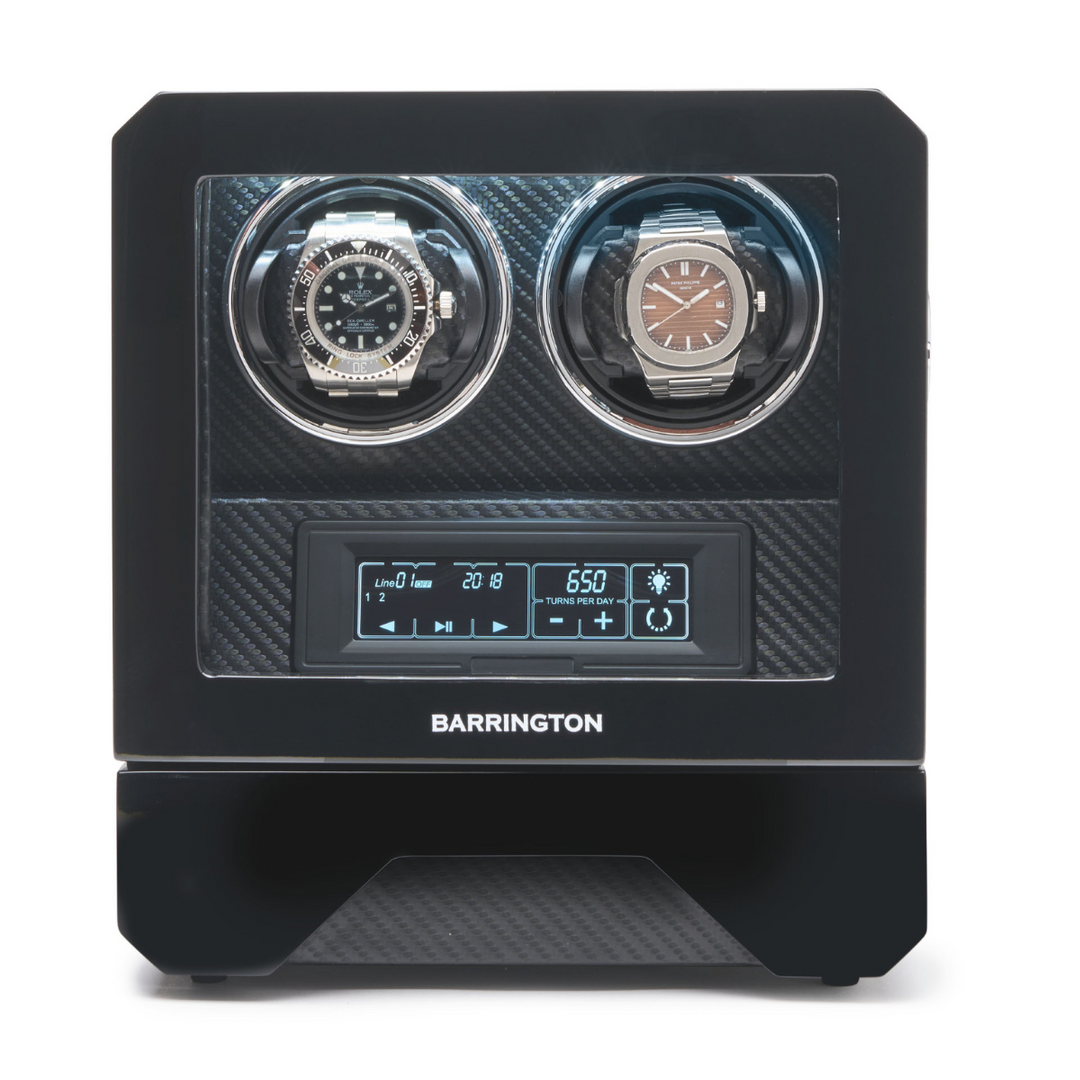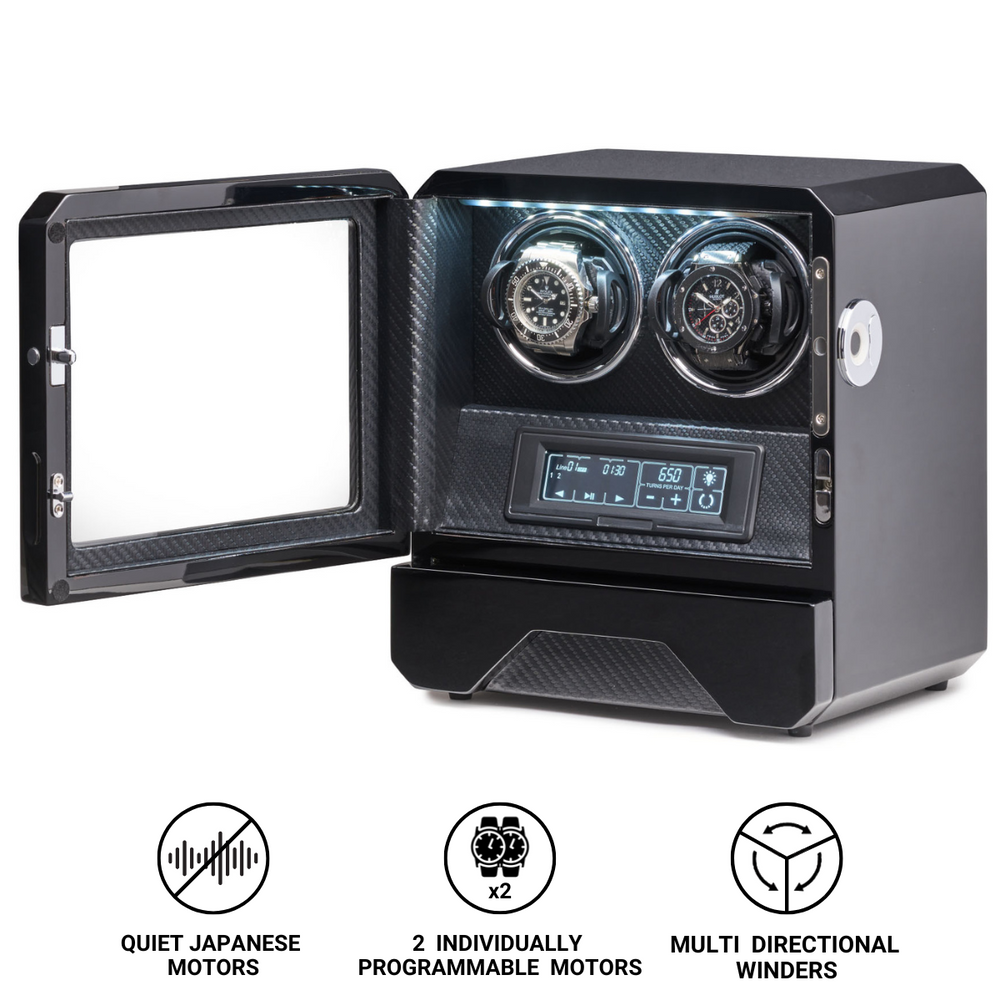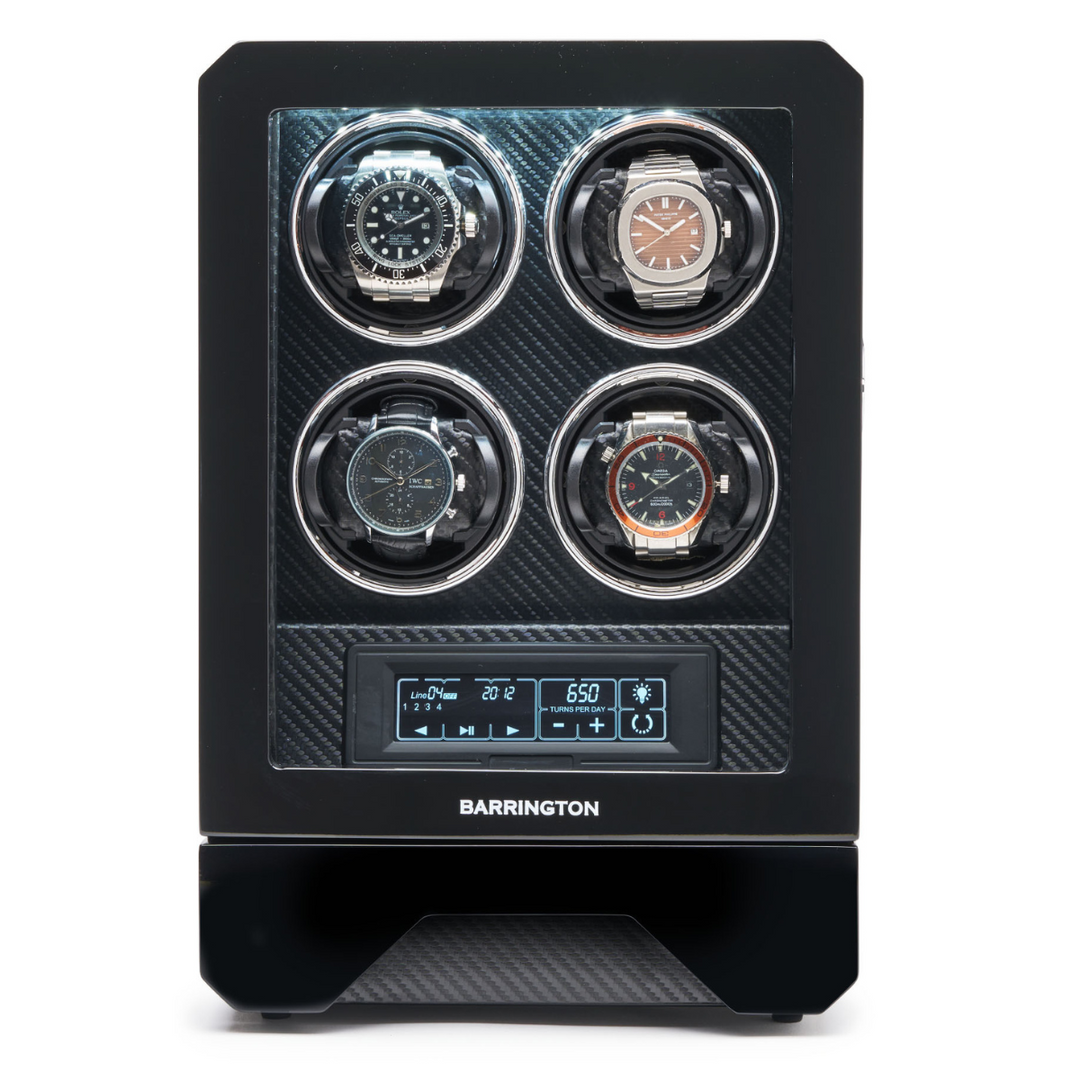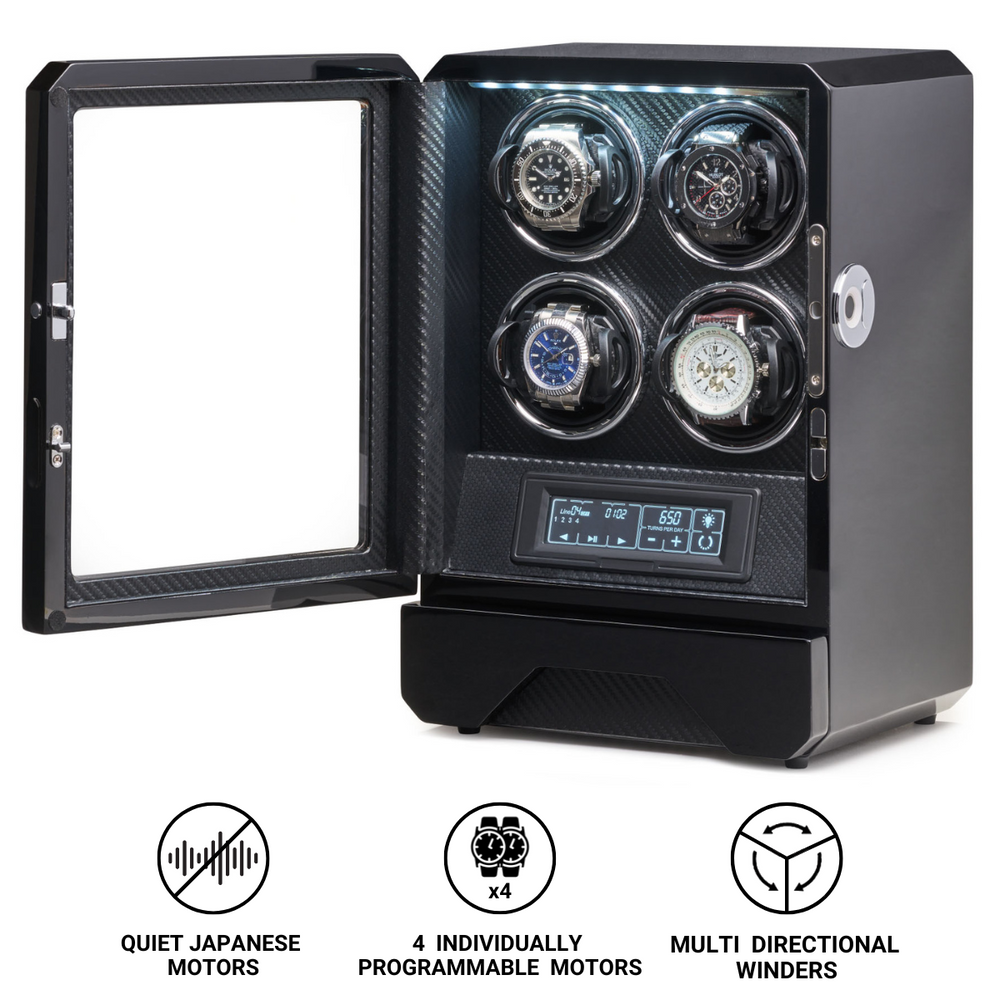What is Chapter Ring?
Among the many details that define the character and functionality of a watch dial, the chapter ring occupies a unique and often understated place. Sometimes called a minute track, rehaut, or minute chapter, the chapter ring is the outermost ring of the dial that carries scales, markings, or minute divisions. Though it may appear to be a purely decorative border, the chapter ring performs crucial roles in both legibility and aesthetics, balancing form and function in a way that lies at the heart of fine watch design.
The chapter ring has existed since the earliest days of mechanical timekeeping, when it was used to improve precision and structure on pocket watch dials. Over time, it evolved from a simple utilitarian feature into a versatile design element that can alter the visual depth, proportion, and even the personality of a timepiece.
Understanding the chapter ring means understanding how watchmakers organise the perception of time on the dial. It is one of the most subtle yet essential components that give a watch its identity.
The Origins of the Chapter Ring
The chapter ring traces its origins back to the 16th and 17th centuries, during the development of early clocks and pocket watches. In these instruments, the ring formed the area where numerals or indices were placed to represent the hours and minutes. It was called the “chapter” because it was divided into sections, much like chapters in a book, each representing a specific portion of time.
On early enamel dials, the chapter ring often contained Roman numerals for the hours and was separated from the centre of the dial by a decorative circular border. This design was both functional and aesthetic, guiding the eye from the outer scale to the hands at the centre. In pocket watches, the chapter ring became an indispensable element of classical dial symmetry, serving as the framework for time indication.
As wristwatches emerged in the early 20th century, the function of the chapter ring evolved. It began to include minute markers, graduations for seconds, and additional scales for chronographs or tachymeters. It was no longer limited to simple numerals but became a dynamic space where legibility met design ingenuity.
The Function of the Chapter Ring
At its core, the chapter ring serves as the bridge between the dial and the case. Its main purpose is to organise the visual structure of the dial, helping the wearer read time precisely and intuitively. It often carries printed or engraved markings that correspond to seconds or minutes, guiding the position of the hands.
In functional watches such as divers, pilots’ watches, and chronographs, the chapter ring is critical for legibility under demanding conditions. Its scale allows for accurate timing of short intervals, especially when paired with prominent hands or luminous markers.
The chapter ring also defines the visual proportions of the dial. By framing the central section, it provides a sense of order and depth. Without it, the transition between the edge of the dial and the crystal could feel abrupt or unfinished. For this reason, watch designers often treat the chapter ring as both a technical and artistic boundary.
In addition, the chapter ring can play a role in aligning the movement and dial within the case, particularly in watches with modular construction. It sometimes conceals the edges of the dial or acts as a spacer, contributing to the overall structural integrity of the watch.
The Relationship Between Chapter Ring and Rehaut
Although the terms are sometimes used interchangeably, the chapter ring and rehaut are not identical. The chapter ring typically refers to the flat or slightly raised portion of the dial where minute or hour markings are applied. The rehaut, on the other hand, is the angled or vertical ring that surrounds the dial and connects it to the crystal.
In some watches, the rehaut itself doubles as the chapter ring, particularly when it features printed or engraved markings. In others, the two elements are distinct: the chapter ring lies flat on the dial surface, while the rehaut provides an architectural step leading toward the bezel.
This interplay between dial, chapter ring, and rehaut allows designers to create depth and dimensionality. A sharply sloped rehaut engraved with a minute track can make the dial appear larger and more three-dimensional. Conversely, a flat chapter ring can emphasise precision and simplicity.
Types of Chapter Rings
The design of the chapter ring varies depending on the watch’s purpose and aesthetic intent. Over centuries of horological evolution, several main types have emerged.
-
Printed Chapter Rings
This is the most common type, where the minute or second markers are directly printed onto the outer edge of the dial. It is typical of dress watches, minimalistic designs, and many vintage models. -
Applied or Raised Chapter Rings
In these designs, the ring is a separate component attached above the dial, often made of metal. It can feature engraved, filled, or embossed markers, offering a sense of depth and luxury. -
Engraved or Etched Chapter Rings
Found in tool and professional watches, these rings are precision-engraved for durability. The markings are filled with paint or luminous material to ensure visibility in low light. -
Functional Chapter Rings
Certain watches integrate additional scales into the chapter ring, such as pulsometers, telemeters, or countdown tracks. These features extend the ring’s purpose beyond standard minute marking.
Each type serves a distinct purpose and aesthetic, from the elegance of a thin printed minute track to the technical appeal of a sloped engraved chapter ring on a diving instrument.
The Aesthetic Role of the Chapter Ring
Beyond its practical use, the chapter ring plays a key role in defining the watch’s visual identity. It influences the dial’s perceived size, symmetry, and character. Designers use the chapter ring to create contrast, balance, and rhythm across the dial.
A narrow chapter ring can make the dial appear more spacious, while a wide or sloped ring can add a sense of enclosure and focus. The use of colour and texture on the chapter ring also affects the watch’s personality. For example, a brushed metallic chapter ring contrasts elegantly against a matte dial, while a black ring surrounding a white dial enhances legibility and precision.
On vintage-inspired watches, a chapter ring with railroad-style minute tracks or crosshair patterns can evoke nostalgia and heritage. In contrast, modern sports watches often use bold chapter rings with luminous or coloured markers for a technical, high-performance aesthetic.
The chapter ring also provides a platform for subtle branding or decorative details. Some manufacturers print the model name or unique references around the chapter ring, while others engrave microtext or security inscriptions as a nod to craftsmanship and authenticity.
Chapter Rings in Different Watch Styles
The chapter ring’s design is adapted to suit different categories of watches, each with its own functional and stylistic demands.
-
Dress Watches
In dress watches, the chapter ring is often understated, featuring minimal markings or fine minute tracks. Its role is to frame the dial harmoniously, ensuring refinement and balance without distraction. -
Diving Watches
Dive watches rely on clear, luminous chapter rings for precise readability underwater. These are usually sloped and fitted with bold minute markers, ensuring legibility at a glance. -
Pilot’s Watches
In aviation timepieces, chapter rings tend to be wide and high-contrast, often incorporating oversized numerals or minute indices. They assist in quick reading under varying light conditions. -
Chronographs and Tool Watches
Technical watches use chapter rings with detailed scales, sometimes including tachymeter or telemeter markings. The ring serves as the base for measuring elapsed time or distance. -
Vintage and Heritage Models
In retro designs, chapter rings often replicate traditional layouts such as railroad-style minute tracks or concentric divisions. These add historical charm while preserving functionality.
This diversity shows that the chapter ring is not confined to a single purpose but adapts fluidly across watchmaking traditions.
Materials and Finishing
Chapter rings can be made from a variety of materials, each offering distinct visual and tactile qualities. Brass, steel, and aluminium are common choices, often plated or coated to match the case. High-end watches may use gold, ceramic, or sapphire for enhanced durability and visual refinement.
The finishing of the chapter ring plays a significant role in the overall aesthetic. Techniques such as brushing, polishing, sandblasting, or anodising can create subtle contrasts with the dial surface. Some rings feature laser-etched or enamel-filled markings, while others use printed tracks applied with extreme precision under magnification.
A growing trend in modern watchmaking is the integration of luminous material into the chapter ring itself. This enhances legibility in darkness and adds a functional design element that aligns with contemporary tool-watch aesthetics.
The Emotional Dimension of the Chapter Ring
While the chapter ring serves a technical function, it also carries emotional weight. It acts as the boundary where the eye reads time, guiding focus toward the hands and the heartbeat of the watch. A well-designed chapter ring brings order to complexity, making time not just measurable but visually satisfying.
Collectors often appreciate how the chapter ring defines the identity of classic models. From the elegant minute tracks of early Patek Philippe Calatravas to the bold sloped rings of Omega’s Seamaster and Rolex’s Explorer, the chapter ring tells a story of design evolution. Its presence connects modern watches to centuries of horological craftsmanship.
Conclusion
The chapter ring may be one of the most overlooked details on a watch, yet it is fundamental to both its appearance and usability. It defines the structure of the dial, enhances legibility, and contributes to the harmony between function and beauty.
From the early enamel pocket watches of the 18th century to the precision instruments of today, the chapter ring remains a vital component of horological design. It embodies the balance between order and artistry, guiding the passage of time with quiet precision.
In the end, the chapter ring is more than a ring of markings. It is the visual architecture of the dial, the frame that makes every glance at the watch both practical and poetic.









